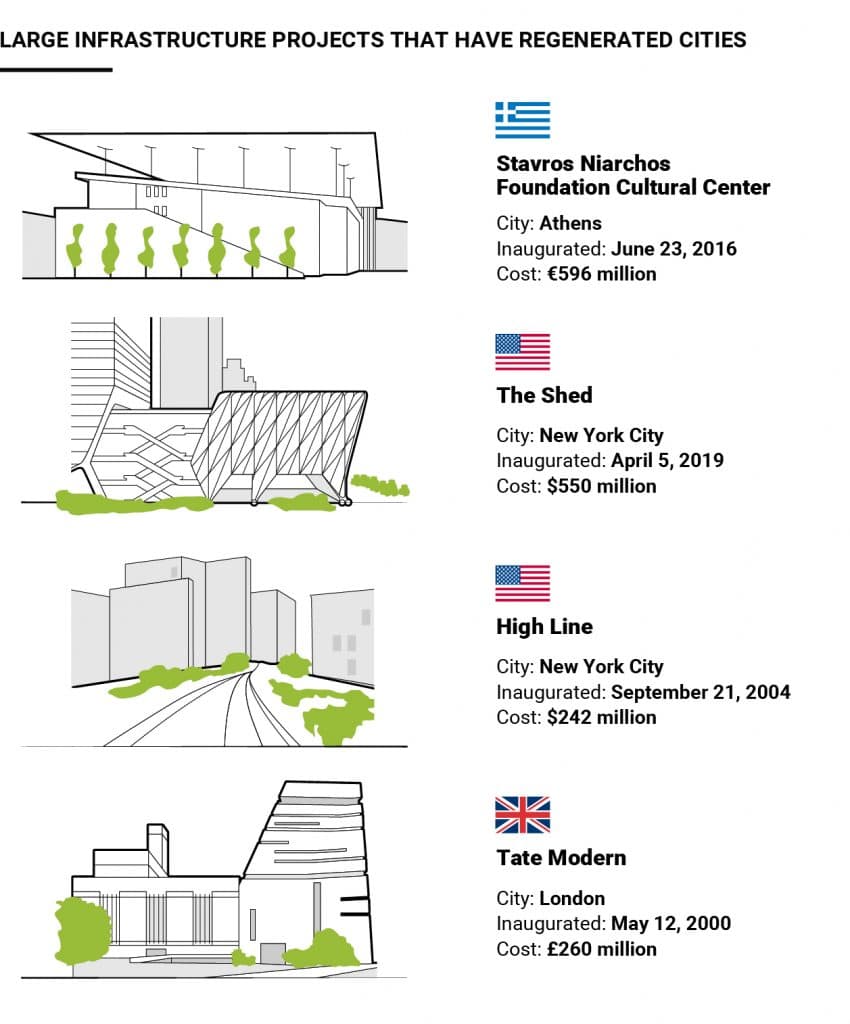
As it faces the uncertainties of Brexit, London is forging ahead with plans to add more iconic buildings to its skyline in its determination to remain a world capital of finance, culture and tourism.
In recent days, the City of London Corporation approved a proposal for the construction of skyscraper that would become the second tallest in Western Europe after the Shard, located nearby on the Thames River.
Like most unusually shaped buildings that have come to characterise the city’s skyline, the skyscaper has acquired the nickname “the Tulip” because of the bulb that would rest at its top. Designed by the British architecture firm Foster + Partners, it would stand at 305 metres and offer a viewing platform with rotating pods, a restaurant and a bar.
Another project whose features are just as unique is the Centre for Music in London, the new home of the London Symphony Orchestra.
Its sponsors - the Barbican Centre, the London Symphony Orchestra and Guildhall School of Music & Drama - hope it will not only reinforce London as a cultural capital of the world, but also reinvigorate its centre. As a potential landmark in its own right, they aspire to have it make a similar impact on music as the Tate Modern had on contemporary art. Opened two decades ago, the Tate is in a former power station near the Thames River in the heart of London.
A Place for Everybody
Designed by the U.S. firm Diller Scofidio + Renfro, known for successes like the High Line Park and the Shed in Manhattan, the centre would curve as a pyramid or trapezoid with a concert hall for up to 2,000 people at its core. The key feature would be a seating arrangement that surrounds the stage to give spectators an uninterrupted and intimate view of a performance. At the top floor of the centre would be a smaller space dedicated to alternative music with views of Saint Paul’s Cathedral and other landmarks.
The sponsors as well as the designer have been emphatic about how they do not want the centre to become a gathering place for the cultural elite. They want it to be a place for everybody – even for those who do not have a ticket to a performance and just want to use it as a meeting place.
In a promotional video, Nicholas Kenyon, managing director of the Barbican Centre, said the idea was to engage people in the world of music. «It will draw people in an accessible and welcoming way», he said.
«It would, above all, be a place for people of all ages and backgrounds to experience the joy of making-music first hand», reads the press release.
Also speaking in the video, Diller said the design was supposed to create a sense of inclusiveness. «We wanted to make a building that welcomes all people whether you have a ticket for a concert or not».
Current estimates for the cost of the core elements of the building are £288 million in today’s prices, according to the press release.

Urban Renewal
The Centre for Music in London is the latest example of urban renewal. In Athens, there is the Stavros Niarchos Foundation Cultural Centre. Built on a car park for the 2004 Olympic Games, it houses the national library and serves as home to the national opera. It also has a huge park, offering some relief to the densely populated neighbourhood of Kallithea where it is located.
Diller Scofidio + Renfro has already had success in urban renewal, the most evident being the High Line Park on the west side of Manhattan. Collaborating with James Corner Field Operations and Piet Oudolf, it designed the park on an abandoned freight rail line elevated above the street. Opened in 2009, the park has drawn countless visitors. In the same neighbourhood, which is known as Hudson Yards, the studio recently assisted the inauguration of The Shed. The result of a collaboration with the Rockwell Group, it is a centre with a modular structure that hosts artistic and cultural events. Its most innovative feature is an outer shell that can be moved to cover an adjoining plaza to create a hall for performances, installations and other events.
The centre, whose design was unveiled in January, would be built on a site that the City of London Corporation has agreed in principle to relinquish once the Museum of London eventually moves to West Smithfield. The spot is a heavily trafficked roundabout that would be converted into a pedestrian area with the construction of the centre. Its sponsors actually describe the location as a key cultural axis in the city, linking the Tate Modern, the Millennium Bridge and Saint Paul’s Cathedral. It is also between two stations of a metro line.
«The realisation of Diller Scofidio + Renfro’s concept designs would create an iconic new gateway to the City of London’s emerging Culture Mile», reads a joint press release accompanying renderings of the concept design by the studio. «(It would) draw visitors into an area that is set to be transformed over the next decade and beyond through new transport hubs, outdoor programming and major enhancements to streets and wider public realm that link the area’s existing and planned world-class cultural destinations».


